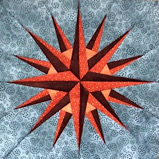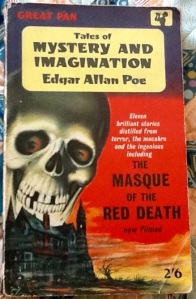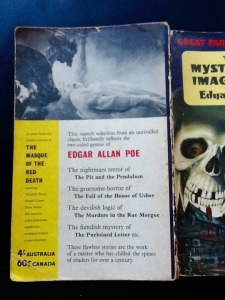Des Lewis will be 77 years old on 18 January 2025
Those who have read these episodic brainstorming reviews of mine must know they are very personal — rough-shod and spontaneous. Synchronicity and anagram mixed. I know they are not professional, never potentially publishable other than in the madness of my head, but I do hope they show grains of dark truth and cosmic panache.

These Des Lewis Gestalt Real-Time Reviews were founded in 2008.

‘What’s the loveliest word in the English language, officer? In the sound it makes in your mouth, in the shape it makes on the page? What do you think? Well now, I’ll tell you: E-L-B-O-W. Elbow.’ — THE SINGING DETECTIVE

“How shall a man find his way unless he lose it?” — Walter de la Mare

To any current genre author I have reviewed before — if you have a new story recently published or soon to be published in a collection or anthology, you may have a review by me of the story that also showcases where it is published. See HERE. (This is because I am no longer well enough to review as many books as I once did.)
Fresh Fictions, free to read HERE.
No AI input in preparation of my texts whatsoever.
THE NEW NONSCENIC
Photos here: https://conezero.wordpress.com/2024/02/24/d-f-lewis-recent-photos-1/



This book is like a suspended lute, the sooner you touch it, its strings resonate again.
I will not itemise the plots of the stories if and when I re-read them, as they are so famous, nor will I remind you of their perfectly pitched gothic or decadent or mysterious music of tentacular text. Literary and philosophical as well as thrilling.
However, I will try to elicit the stories’ preternatural qualities to suit my preternatural reviews…
And the perfect example must surely be the first one that is printed in the book: THE FALL OF THE HOUSE OF USHER, with reference to the painter Fuseli, the lengthy text of a poem entitled ‘The Haunted Palace’, plus the books mentioned in the quoted passage below but, above all, ‘Mad Trist’ by Sir Launcelot Canning, where that randomly chosen book preternaturally matches the sounds and sights that occur in the Usher plot exactly when those passages from ‘Mad Trist’ are read aloud to Roderick Usher by the narrator. The ultimate gestalt as a preternature of literature.
“Our books — the books which, for years, had formed no small portion of the mental existence of the invalid — were, as might be supposed, in strict keeping with this character of phantasm. We pored together over such works as the Vert vert et Chartreuse of Gresset; the Belphegor of Machiavelli; the Heaven and Hell of Swedenborg; the Subterranean Voyage of Nicholas Klimm by Holberg; the Chiromancy of Robert Flud, of Jean D’Indagine, and of De la Chambre; the Journey into the Blue Distance of Tieck; and the City of the Sun of Campanella. One favourite volume was a small octavo edition of the Directorium Inquisitorum, by the Dominican Eymeric de Gironne; and there were passages in Pomponius Mela, about the old African Satyrs and Œgipans, over which Usher would sit dreaming for hours. His chief delight, however, was found in the perusal of an exceedingly rare and curious book in quarto Gothic — the manual of a forgotten church — the Vigiliæ Mortuorum secundum Chorum Ecclesiæ Maguntinæ.”
Perhaps significant that today, the day after the above review, I reviewed here HPL’s ‘The Rats in the Walls’.
My other real-time reviews of older or classic books: https://dflewisreviews.wordpress.com/reviews-of-older-books/
THE MURDERS IN THE RUE MORGUE
“As the strong man exults in his physical ability, delighting in such exercises as call his muscles into action, so glories the analyst in that moral activity which disentangles. He derives pleasure from even the most trivial occupations bringing his talent into play. He is fond of enigmas, of conundrums, of hieroglyphics; exhibiting in his solutions of each a degree of acumen which appears to the ordinary apprehension præternatural.” (My bold)
‘Random observations preceding a somewhat peculiar narration’ or a supremely analytical Sherlock Holmes in the making? Word association trail by intentional fallacy or a sane scientific path to the core of things? This tale of murders, is like seeking the gestalt as Ourang-Outang in every work of literature, by unstuffing the corpse from the text’s chimney, as it were. And the quote at the end of this Poe story from Rousseau’s Nouvelle Heloise reminds me of another book that links this story to one by Elise Forier Edie that I reviewed here a few days ago – by preternature or design? Ourang-Outang or You-Go-Back?
“The faculty of re-solution is possibly much invigorated by mathematical study, and especially by that highest branch of it which, unjustly, and merely on account of its retrograde operations, has been called, as if par excellence, analysis.” (My bold)
THE MASQUE OF THE RED DEATH
“To and fro in the seven chambers there stalked, in fact, a multitude of dreams. And these — the dreams — writhed in and about, taking hue from the rooms, and causing the wild music of the orchestra to seem as the echo of their steps.”
Seven lethal chambers, leading each to each. No loose nails or locked doors. Just a new vista around each corner. There seems something synaesthetically premonitory about this work with regard to modern Horror Literature, building up a mask or masque of security anthropomorphised through the leitmotifs of colour, music and dance to become not security at all but Death as eventual gestalt. A template from scratch that is only a template in hindsight. No literary interpretations or perceived subtleties discovered by me or by anyone else in the text can soften the certainty of pattern.
THE PIT AND THE PENDULUM
“He who has never swooned, is not he who finds strange palaces and wildly familiar faces in coals that glow; is not he who beholds floating in mid-air the sad visions that the many may not view; is not he who ponders over the perfume of some novel flower – is not he whose brain grows bewildered with the meaning of some musical cadence which has never before arrested his attention.”
The Pan edition I am reading has the ‘never’ in the first line above in square brackets! I feel this may be significant regarding this analytical text, of measurements and calculations within an unknown environment of coldly vermin-infested swaddling-darkness – an analysis worthy of the protagonist in the Rue Morgue story, where both negative and positive needs to be factored into the final gestalt. The torture by the Inquisition, although powerfully incanted by the text, is beside the point with regard to this analysis and the imputed happy ending. Not a horror story so much as a temporary ride on a coldly concocted version of a hair-raising ghosthouse trip.
[There is something resonant about the sound of ‘Pit and Pendulum’ with the word Pickman from the HPL story I read a few hours ago for a simultaneous real-time review.]
That ‘never’ mentioned above is also in square brackets in the quote from the story on page 3 of the article here about Seizures in Poe: http://web.neuro.columbia.edu/members/docs/bazil/poe%20arch%20neurol%201999.pdf
THE TELL-TALE HEART
Well, of course, this relatively short real-time monologue is monumental Poe. I first encountered it in the above Pan paperback, from which I read it aloud, as a 17 year old, on to my reel-to-reel tape recorder. I now can use this real-to-real review to tell you that I read it aloud again a few years ago here on the TLO Discussion Forum (you merely need to join this forum to be able to hear it).
I have read this work at least a thousand times, and it seems to me to be like a Rue Morgue type analysis of a murder, where that one was linear, and this one retrocausal. Or vice versa.
THE GOLD BUG
Pages 88 – 103
“What ho! what ho! this fellow is dancing mad!
He hath been bitten by the Tarantula. ALL IN THE WRONG.”
It seems appropriate I read and real-time reviewed the cosmic lunacy of the Legrasse chapter of HPL’s ‘Call of Cthulhu’ this very morning… Now we have the at least mild lunacy of Legrand and his dead gold-bug (equivalent to HPL’s swamp-found statuette?) that has or does not have antennae, does or does not give him a bite, is or is not made of real gold, is or is not truly dead, and Legrand’s ‘negro’ or ‘nigger’ Jup, who threatens (affectionately?) to whup his massa Legrand just as much as his massa expects servitude from him. Legrand’s friend, the narrator, is commissioned to accompany them both on a wild-goes-nowhere chase to the wilds involving Jup later climbing precariously upon the dead limb of a tree and measuring down through a there-found skull’s left eye with the threaded gold-bug, where, toward a spot on the ground, I leave them on page 103 starting to dig at that spot… Mild lunacy, or cosmic connections to some eternal Lovecraftian truth, or another Rue Morgue analysis of measurement?
I shall now listen to Bach’s Goldbug variations…
My review of Call of Cthulhu here: https://dflewisreviews.wordpress.com/2015/04/21/the-haunter-of-the-dark-hp-lovecraft/#comment-4321
Pages 103 – 122
“I say the singularity of this coincidence absolutely stupefied me for a time. This is the usual effect of such coincidences. The mind struggles to establish a connexion — a sequence of cause and effect — and, being unable to do so, suffers a species of temporary paralysis.”
And perhaps I should leave this second half of ‘The Gold Bug’ at that, for fear of spoilers. (Seek the treasure for yourself, I say!)
Other than to say that this text sort of mirrors the triangulations of Escher angles and coordinates of longtitude-latitude in ‘Call of Cthulhu’ (that I coincidentally read today), as well as the cryptic measurement and word associations of the Rue Morgue. Together with an envied mystification for mystification’s sake by using the gold-bug rather than a bullet! And, oh yes, the Cthulhu Mythos also needs expendable suicide spear-carriers like you and me who dig it up by collating (or merely reading) such stories…!
Indeed, the whole nature of the cryptic unravelling does remind me of my own gestalt real-time reviewing by brainstorming, triangulation and retrocausality: ‘the synchronised shards of random truth and fiction’, as I have called this process for decades.
THE PURLOINED LETTER
“A single grain of gimlet-dust, for example, would have been as obvious as an apple.”
The detective character Dupin from the Rue Morgue affair solves the whereabouts of a stolen letter – with inferred motives for retention by its thief – by rescuing it from Plain Sight amid an absorbing vision of algebraic analysis upon multiple bluffs and graded assumptions about the various parties’ intelligence. But that description of the plot, of course, is a complete bluff on my own part… “…carefully probed, longitudinally, with the needles.”
It was like the Pendulum’s Pit suddenly revealed. The tell-tale heart under the floorboards. Cthulhu hidden in the sunlight. My face in the mirror. Jup’s left eye hidden from his right. Death camouflaged by blood.
THE CASK OF AMONTILLADO
“Ugh! ugh! ugh! — ugh! ugh! ugh! — ugh! ugh! ugh! — ugh! ugh! ugh! — ugh! ugh! ugh!”
Telling of one coughing tantamount toward his coffin, enticed by pride of knowledge about wine, this flash fiction has a retributive mason build a wall around this human wine-coffer, a catacomb wall that is the opposite of freed masonry, as tangled with the decayed mortality of human bones around a potential tell-tale heart. Not a fable of retribution so much as an amoral gratuitousness. Undiscoverable even by a Dupin?
LIGEIA
“Man doth not yield himself to the angels, nor unto death utterly, save only through the weakness of his feeble will. — JOSEPH GLANVILL.”
A sumptuous, rhapsodically textured text, deceptively ‘slender’ or agile like Ligeia herself perhaps when in full health, but decadently and morbidly tapestried throughout otherwise. Like Ligeia, there is a ‘strangeness’ in this text but one that is hidden in Plain Sight, like Poe’s purloined letter earlier. But, here, it is the Sight itself, her eyes, the most thrilling eyes in all literature, I claim — followed in time’s due accretion by a “Saracenic” tapestried undulance, a literally textured vision of her soul wrestling with shadow… In the end, the Eyes Have It, the Eyes Have It. Eyes with the glance of pervasive foreign, oriental cultures…
A subsuming of one’s second false love with a revivification by one’s first true love. The hope of transcending Death through the narrator’s (or is it Ligeia’s?) wilful amorality? Like today’s battling Saracenic wills in Iraq and Syria? That Conqueror Worm? Poe at his undidactic best. Or with a didacticism hidden in Plain Sight?
cf ‘The Giaour’ by Lord Byron, about Leila… This review of mine seems to be the very first connection between ‘The Giaour’ and ‘Ligeia’. Poe was a fan of Byron. And there are similar Islamic connections in ‘The Giaour’ (and, by the way, a vampire)…
THE MYSTERY OF MARIE ROGÊT
“In my own heart, there dwells no faith in præternature.”
With that ironic quote and the decoy of this being a sequel of the Rue Morgue affair, with the same Sherlock Holmesian Dupin character, it is in fact an amazing story quite beyond the scope of normal detective story ratiocination, a lengthy relentless text that I felt myself compelled ineluctably to read, even though I could not consciously follow all its paradoxically logical brainstorming of a murder crime in America exactly reflected by one in France. But I could follow it osmotically. And which is the parallel crime, which the real one? Those ‘synchronised shards of random truth and fiction’ again. This is a template for our times, where every permutation of truth is exploited cybernetically by ourselves upon each other. It is also a template for my own gestalt real-time reviewing, my dreamcatching, my interest in so-called chance games like Deal or No Deal, the balance of probabilities, triangulated coordinates, the human condition, fictionalised truth, the value of irrelevance, coincidence and the ‘insanity of logic’…
THE BLACK CAT
If the previous story is where this book clinches its gestalt, this one is its didactic coda. A neat horrific blend of ‘The Tell-Tale Heart’ and ‘The Cask of Amontillado’, where the protagonist’s retribution is upon living creatures themselves through ‘Perverseness’ from being forced to live tormented with alcoholic addiction beyond mere casks of sherry. Not didactic at all, perhaps, but gratuitous. Gratuitous, if inevitable. A fate ignited by a tell-tale catalyst called Pluto (HPL’s Yuggoth). And sheer unnecessary bravado. A bit like picking up this book again after 50 years?
end
Reblogged this on THE DREAMCATCHER OF BOOKS: Gestalt Real-Time Reviews.
Pingback: The Facts in the Case of M. Valdemar | The Des Lewis Gestalt Real-Time Reviews
Pingback: THE TELL-TALE HEART by Edgar Allan Poe | The Gestalt Real-Time Reviews of Books
Pingback: Berenice by Edgar Allan Poe | The Gestalt Real-Time Reviews of Books
Pingback: A threesome significant for all tastes in readers of short stories… | The Gestalt Real-Time Reviews of Books